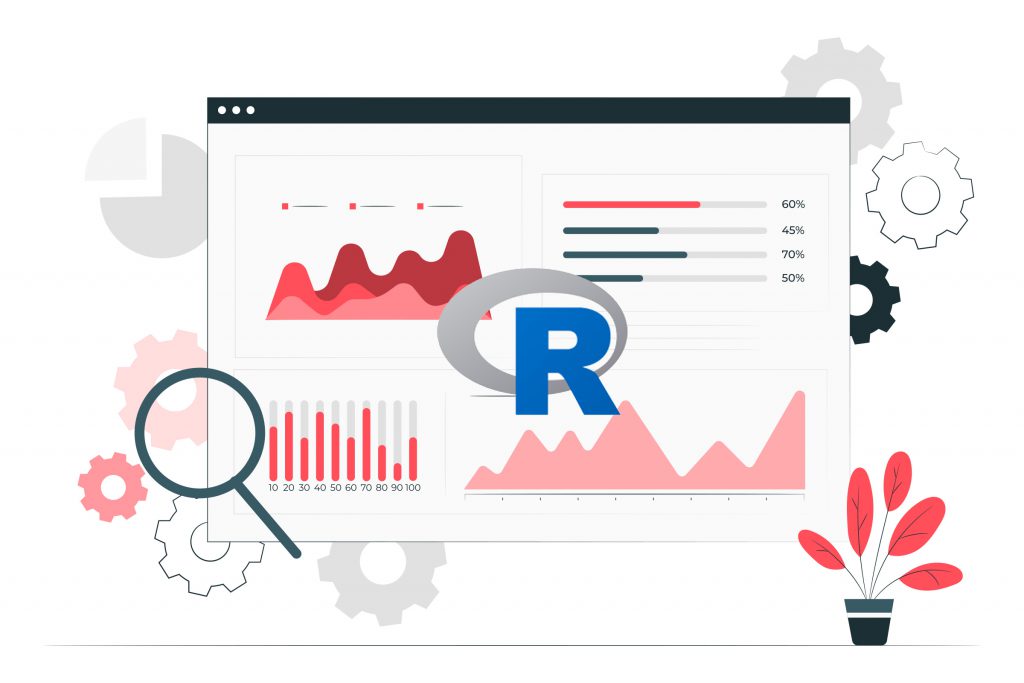Market research is an integral part of any business because it allows you to understand different market situations and informed business decisions. To get real, accurate, and usable data for your business, you must use the right market research tools. When you’re developing a data analysis program, use the right programming tools and languages.
One of the most common programming languages for statistics and graphics is R. Whether you’re developing the market research program yourself or with the help of freelance R programmers, you need to understand how R works, what R programming is used for, and how you can use it for data analysis. This article discusses the benefits of the R programming language and how to use it for analyzing data.
What Is R Programming?
R programming is a programming language used in statistical computing and graphics. Researchers commonly use it, statisticians, marketers, and data analysts to gather, analyze, manipulate, clean, visualize, and present data. It’s the language used in many popular research and data analysis tools and programs.
Fortunately, R programming is an open-source environment. Therefore, anyone can use it to carry out their programming tasks. According to the Institute of Electrical and Electronics Engineering (IEEE), R is the 5th most popular programming language in the world currently–this matters because R is a domain-specific programming language, and it appears more popular than general-purpose programming languages like C#.
The growing popularity of this language proves that programmers are developing a serious interest in it. It has also become quite useful in important fields such as Data Science and Machine Learning. When you hire software programmers, make sure they’re fully familiar with R programming because they’ll use it in almost every project.
Fortunately, many professional programmers today are trained in different programming languages, including R, but it’s important to cross-examine your R programmers thoroughly before you hire them just to ensure they have the necessary expertise and experience. With reputable freelancing sites like Guru, you can learn everything you need about your potential R programmers before you even contact them with a job offer.
The site requires all job seekers to create detailed profiles, indicating their level of training, skill, and experience. They also have to provide their portfolios with all the successful projects they’ve handled before. With this information, you can easily pick the right programmers for your projects. You should also include R programming as one of your job requirements to attract programmers with experience in this area.
How to Use R Programming for Data Analysis
With the growing variety of Internet of Things (IoT) devices, people have access to large amounts of data necessary for important business decisions. For instance, a simple hard drive can help you collect terabytes of data that matters to your business, career, or life in general.
Analyzing this amount of data manually is practically impossible. You need a reliable data analysis system that can get the job done quickly and effectively. This is where programming languages like R come in handy. With R programming, you can collect large amounts of data in real-time, perform statistical and predictive analysis, develop visualizations, and present actionable results to different stakeholders within a short time.
That’s why many data analysis courses include R programming in their curricula. This programming language is every data analyst’s favorite tool. With its rich repository of packages, it allows you to perform virtually every statistical function. Currently, the repository has over 9100 packages. Its expressive syntax enables data analysts and researchers, even those without a background in computer science, to import, clean, and analyze large amounts of data quickly.
R programming can also chart your data, allowing you to plot your data and come up with interesting graphics from all kinds of datasets. You can also use this programming language in your predictive analytics and artificial intelligence. With several packages for ordinary machine learning tasks like linear and non-linear classification, regression, and decision trees, R programming enables data analysts and programmers to implement artificial intelligence algorithms in different fields, including finance, marketing, health care, research, and more.
Lastly, if you are hiring software engineers to build market research and data analysis programs for you, make sure they have experience in R programming because it’s essential for the success of your program. Fortunately, you can find a huge database of qualified and experienced R programmers on trusted freelancing sites like Guru.



